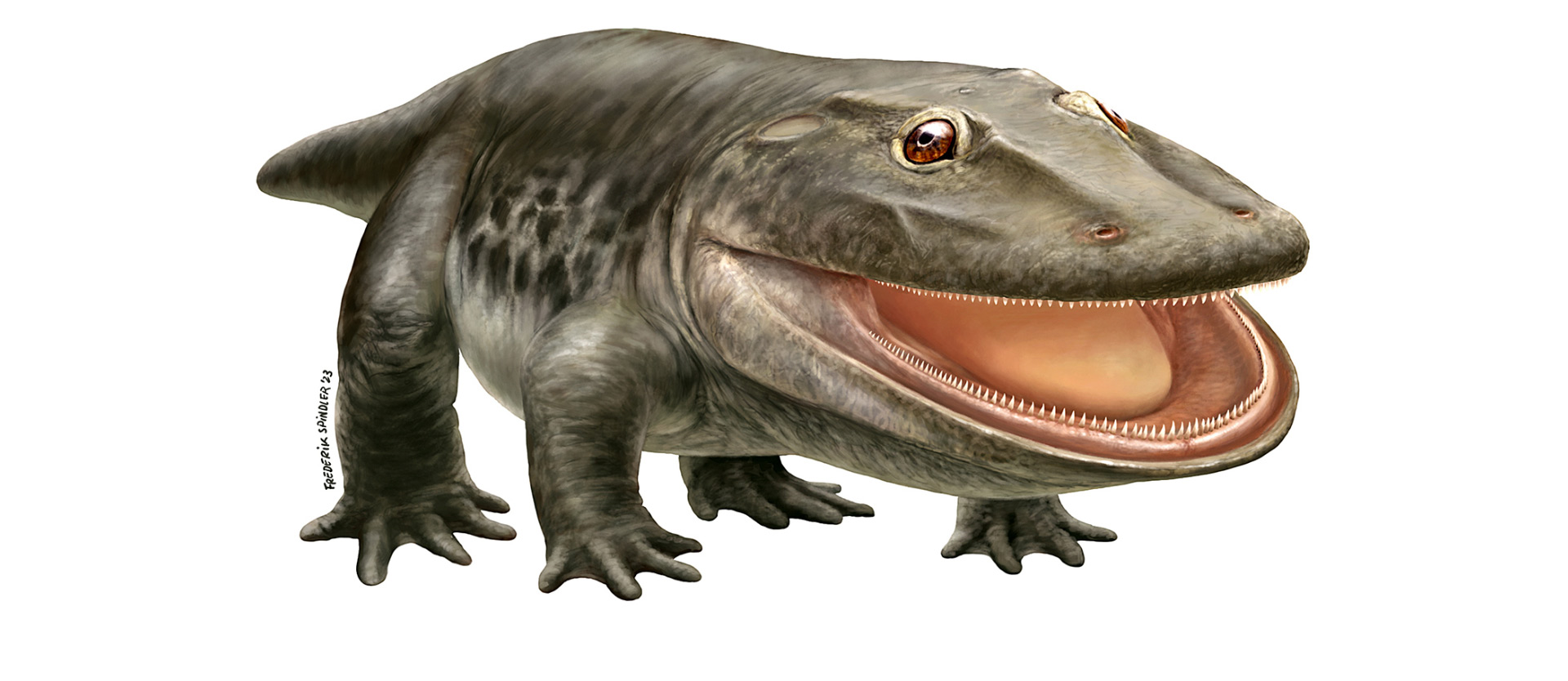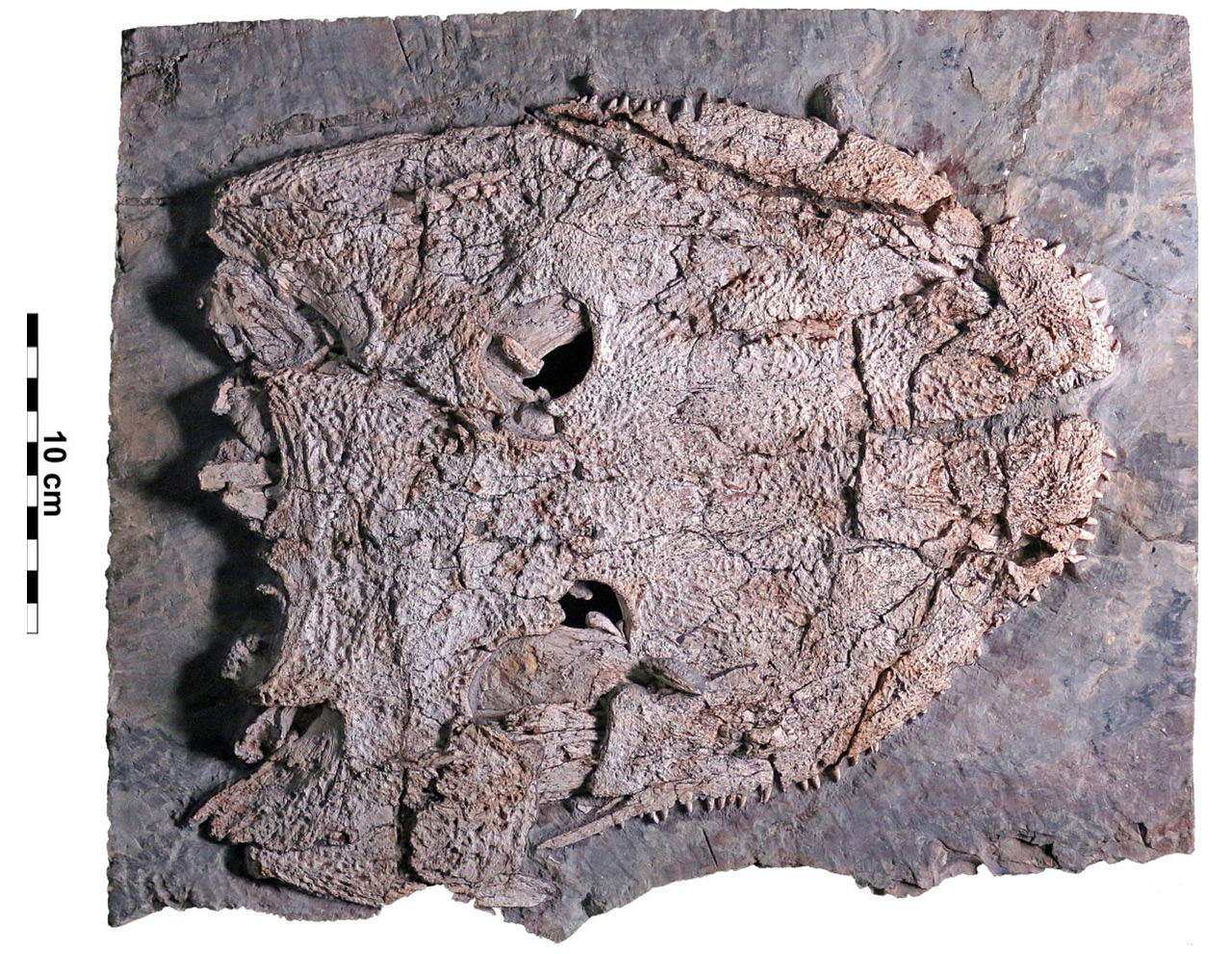
Great-great-great-grandpa of crocodiles
One of the largest predators of its time, lived 300 million years ago in the Western Palatinate. Now a fossil specimen of Stenocranio has been presented by palaeontologists from the Museum für Naturkunde in Berlin.

According to researchers the Stenocranio (Greek: stenos + kranio = "narrow-skinned") belongs to the eryopid family and was a large crocodile-like amphibian that lived in what is now the region around Remigiusberg, where most likely a large river flowed into a lake 300 million years ago.
Up to one and a half meters long, a large, flat skull and many pointy teeth, this is what quadrupeds Stenocranio probably looked like, the scientists write. The animals could have grown up to 1.5 meters long and weighed up to 70 kilograms. Adult Stenocranios lived in the water and on land, while younger animals spent most of their time in the water. Being predators, they fed on fish and other primitive dinosaurs. They hunted their prey in shallow waters and on the banks of lakes and rivers. Due to the shape of their jaws, palaeontologists assume that they must have swallowed their prey whole.

Fossil finds, such as this one, bear witness to the former existence of this crocodile ancestor.
Two fossilized remains of the Stenocranio were found on the site of a quarry in Remigiusberg near Kusel in the Western Palatinate. The bigger specimen was discovered on the shore of a lake in 2013: a 27-centimetre-long fossil skull with additional parts of the spine and shoulder girdle. A smaller specimen (25 centimetres) was found in 2018 during an excavation by the GEOSKOP Environmental Museum in the shallows of a lake.
Palaeontologists explain that these rare finds show that eryopid animals were not only native to America, but that they were also widespread in Germany. Both fossils will now find a new home in the State Collection of Natural History in Mainz
Original publication:
Ralf Werneburg, Florian Witzmann, Larry Rinehart, Jan Fischer, Sebastian Voigt
A new eryopid temnospondyl from the Carboniferous-Permian boundary of Germany
Journal of Paleontology, 2024.
DOI: 10.1017/jpa.2023.58.









